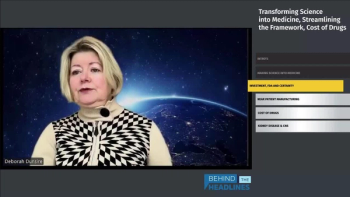
Drug Approvals Highest Since 1996
In 2014, FDA approved 41 new molecular entities, which is the highest number since 1996.
The final count is in, and FDA approved 41 drugs in 2014. The number FDA's Margaret Hamburg, MD
According to Reuters, 40% of the new drugs were specialty products for rare conditions. Three of these-Lynparza (olaparib), Viekira Pak (ombitasvir, paritaprevir, and ritonavir tablets co-packaged with dasabuvir tablets), and Opdivo (nivolumab)-were among the novel products approved at the tail end of 2014.
It was a big year for Breakthrough Therapies, with FDA approving nine drugs with this designation compared with three in 2013, according to data gleaned by analyst Mark Schoenebaum of Evercore ISI. While five of these were for the treatment of cancer, the other four were for cystic fibrosis, aplastic anemia, and idiopathic pulmonary fibrosis. Schoenebaum said that in general, successful Breakthrough Therapy designation requests showed a reduction in the risk of the event of interest of more than 50%. He wrote in a note that according to FDA documents, “in general, improvements of 10% over comparator do not seem to be [breakthrough therapy] territory.”
Biotech initial public offerings also hit a record high in 2014, as there was much activity with M&A deals in the industry. Following the announcement that Express Scripts would exclusively reimburse Viekira Pak over other high-priced hepatitis C medications, however, the biotech sector had its worst day since April 2014,
UPDATE: Bernard Munos of Forbes reports that FDA approved a total of 44 drugs in 2014: 39 by CDER and 5 by CBER. He
Sources:
FDA
Reuters
Bloomberg
Newsletter
Stay at the forefront of biopharmaceutical innovation—subscribe to BioPharm International for expert insights on drug development, manufacturing, compliance, and more.




